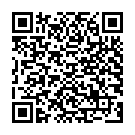Recommended or required reading:
• Belobaba, Peter, et al (2016); The Global Airline Industry, 2nd Edition, Wiley
• Mensen, H.: (2013): Handbuchder Luftfahrt, Springer-Verlag / Berlin,Heidelberg
• Conrady, R., Fichert, F. , Sterzenbach, R. (2018): Luftverkehr: Betriebswirtschaftliches Lehr-und Handbuch, 6. Auflage, OldenburgVerlag
• Pompl, W. (2006): Luftverkehr-Eine ökonomische und politische Einführung, 5. Auflage, Berlin
• Maurer, P. (2006): Luftverkehrsmanagement–Basiswissen, 4. Auflage, München
• Doganis, R. (2019): Flying Off Course, 5th Edition, New York
• Kearns, Suzanne (2021): Fundamentals of International Aviation, 2. Auflage New York
• Wensween, J. (2015): Air Transportation, 8thEdition, Burlington
• Wieske-Hartz, H. (2004): Airline Operation, Hamburg
• Schulz, A., Baumann, S., Wiedenmann, S. (2010): Flughafen Management, Oldenburg Verlag
• Schwenk, D., Giemulla, E. (Hrsg.), (2013): Handbuch des Luftverkehrsrechts, 4.Auflage, Bücher Carl Heymanns Verlag
• Rodrigues, C., Cusick, S. (2012): Commercial Aviation Safety, McGraw Hill Professional
• Schmidt, G.H.E. (2000): Handbuch Airline Management, München
• Rodrigues, C., Cusick,S. (2012): Commercial Aviation Safety, McGraw Hill Professional
• Dekker, Sydney (2014): The Fieldguide to Understanding Human Error, 3rd Edition, Taylor & Francis
• Belobaba, Peter, et al (2016); The Global Airline Industry, 2nd Edition, Wiley
• Budd, Lucy & Ison, Stephen (2020); Air Transport Management, Routledge
• Clark, Paul (2017); Buying the Big Jets, 3rd Edition, Routledge
[updated 19.12.2023]
|

